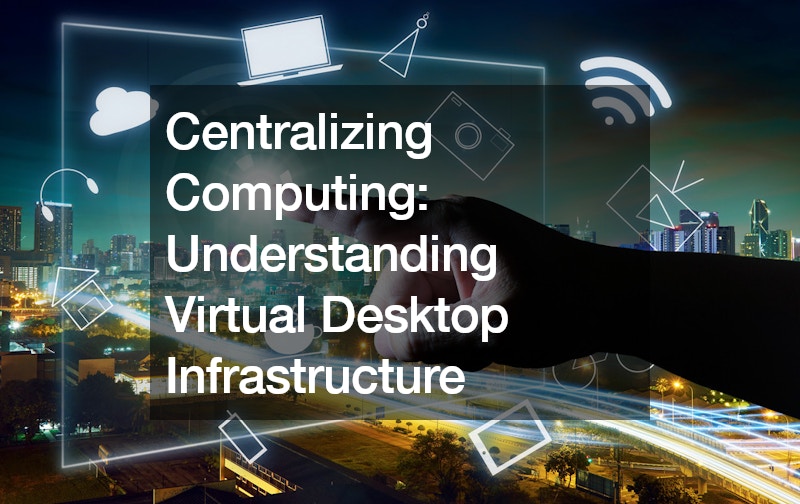In the ever-evolving landscape of technology, businesses are continually seeking innovative solutions to enhance efficiency and streamline operations. One such solution gaining prominence is Virtual Desktop Infrastructure (VDI), a concept that involves centralizing computing resources to improve manageability and accessibility.
At its core, VDI operates on the foundation of Virtual Desktop Infrastructure. This infrastructure begins with a server housing a hypervisor, a specialized software akin to an operating system.
This hypervisor’s role is crucial, as it facilitates the creation of multiple virtual servers within a physical server, effectively multiplying the computing capabilities. Think of it as a virtualization layer that transforms a single server into a host for numerous virtual servers.
Within these virtual servers, Desktop-as-a-Service (DaaS) software comes into play. This software, provided by various vendors like Microsoft, VMware, and Citrix, enables the creation of what is known as a “golden image.” This golden image is essentially a virtual machine, a self-contained unit that houses all necessary applications and software. If one wishes to replicate this environment, whether it be for one or a hundred virtual machines, they all stem from this golden image.
The beauty of VDI lies in its ability to centralize computing resources, simplifying management and providing a more streamlined approach to handling a multitude of devices. This centralized model also aligns well with the concept of a session hosted environment. In this setup, multiple users, whether on laptops, desktops, iPhones, or iPads, share access to a single virtual machine. This arrangement fosters collaboration and makes it easier for IT administrators to manage and maintain a consistent computing environment.
However, the session hosted environment isn’t the only configuration in the VDI playbook. For power users engaging in resource-intensive tasks like AutoCAD, Photoshop, or video editing, a dedicated hosted environment becomes essential. Here, each user is allocated their own virtual machine, ensuring a more robust, predictable, and powerful computing experience. While this option comes with added benefits, it also comes with a higher price tag, highlighting the trade-offs involved in choosing between a session hosted and dedicated hosted environment.
VDI, with its ability to centralize computing resources, offers a stark contrast to the scattered computer setups seen in traditional environments. IT administrators find solace in the ease of managing and controlling the computing infrastructure from a centralized location. Spinning up and down virtual machines becomes a more straightforward task, providing agility in adapting to changing business needs.
However, it’s crucial to recognize that while VDI presents an attractive solution, it is not without its challenges. Implementing VDI requires a significant investment of time, effort, and expertise. The technology is intricate and demands a thorough understanding of the underlying components. It is not an endeavor for the faint of heart or those unfamiliar with the complexities of virtualization.
The process of setting up and managing VDI is akin to navigating a minefield. Misconfigurations and oversights can lead to disasters, impacting the entire computing environment. This complexity is a double-edged sword – while VDI offers immense benefits, it demands a level of knowledge and skill that might be beyond the reach of novice administrators.
Moreover, VDI also presents considerations regarding scalability and performance optimization. As businesses grow and evolve, the demands on their computing infrastructure may change. IT administrators must anticipate these changes and ensure that the VDI environment can scale seamlessly to accommodate increased workloads and user demands. Additionally, optimizing performance within the VDI environment is crucial to delivering a responsive and reliable computing experience for end-users.
Security is another critical aspect of VDI that cannot be overlooked. Centralizing computing resources can offer benefits in terms of control and monitoring, but it also presents a single point of failure and a tempting target for malicious actors. Implementing robust security measures, such as encryption, access controls, and regular security audits, is essential to safeguarding sensitive data and protecting the integrity of the VDI environment.
Moreover, VDI can facilitate remote work and support Bring Your Own Device (BYOD) initiatives, allowing employees to access their virtual desktops from any location and device with an internet connection. This flexibility can enhance productivity and employee satisfaction while reducing hardware costs for the organization.
In conclusion, Virtual Desktop Infrastructure stands as a powerful solution for businesses seeking to centralize their computing resources. The ability to create a standardized computing environment, whether through a session hosted or dedicated hosted approach, is a testament to the flexibility of VDI. However, prospective adopters must tread carefully, acknowledging the complexities and potential pitfalls that come with implementing such a sophisticated system. As technology continues to evolve, understanding and mastering VDI can prove to be a strategic move for businesses aiming to stay ahead in the dynamic landscape of modern computing.
.

